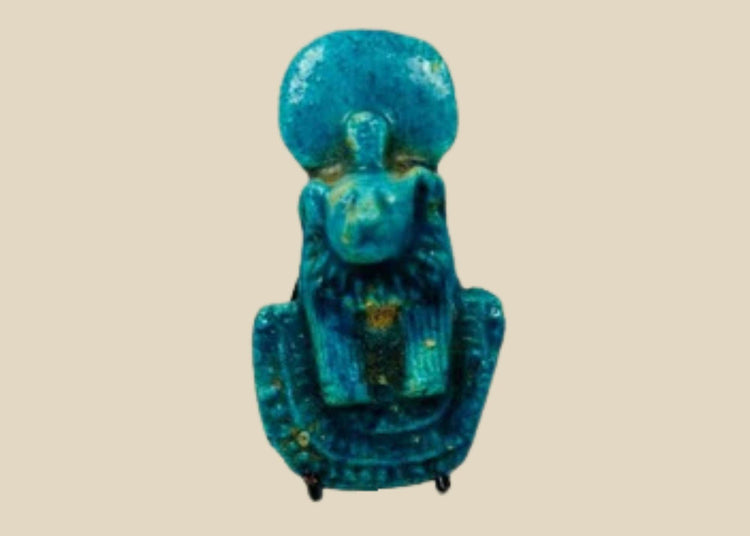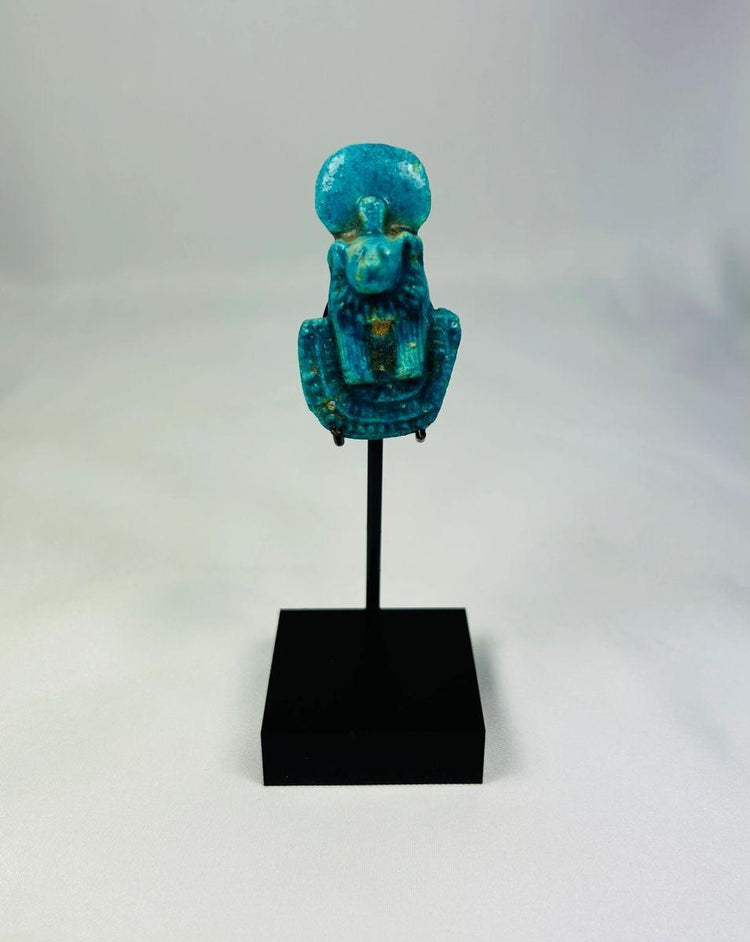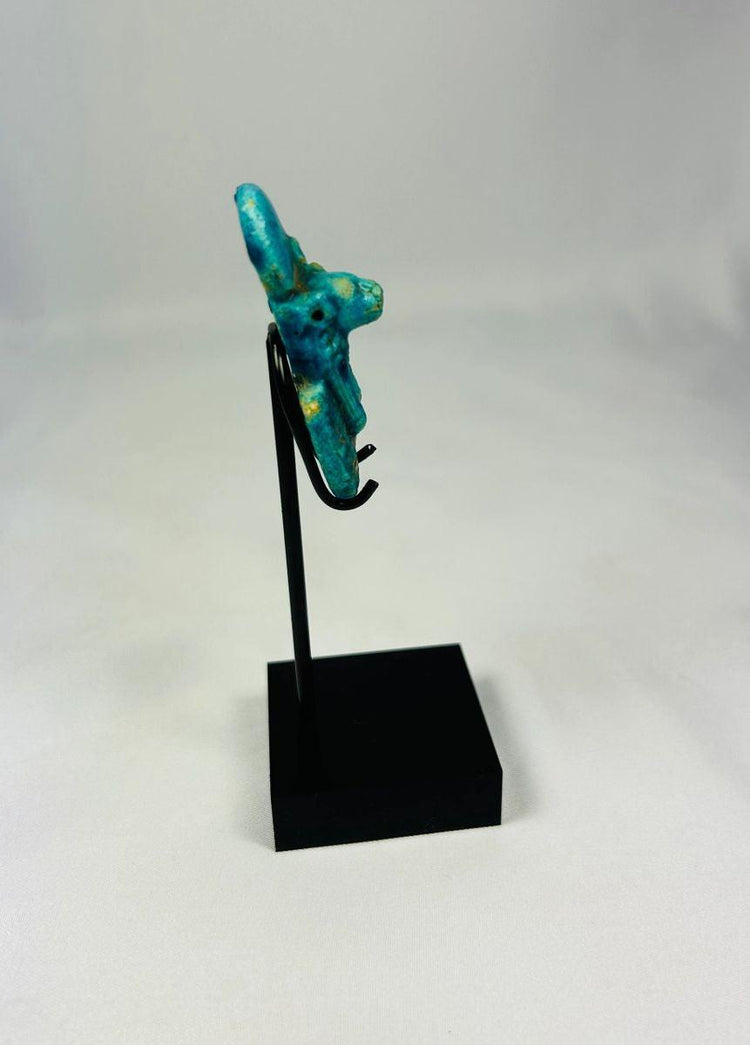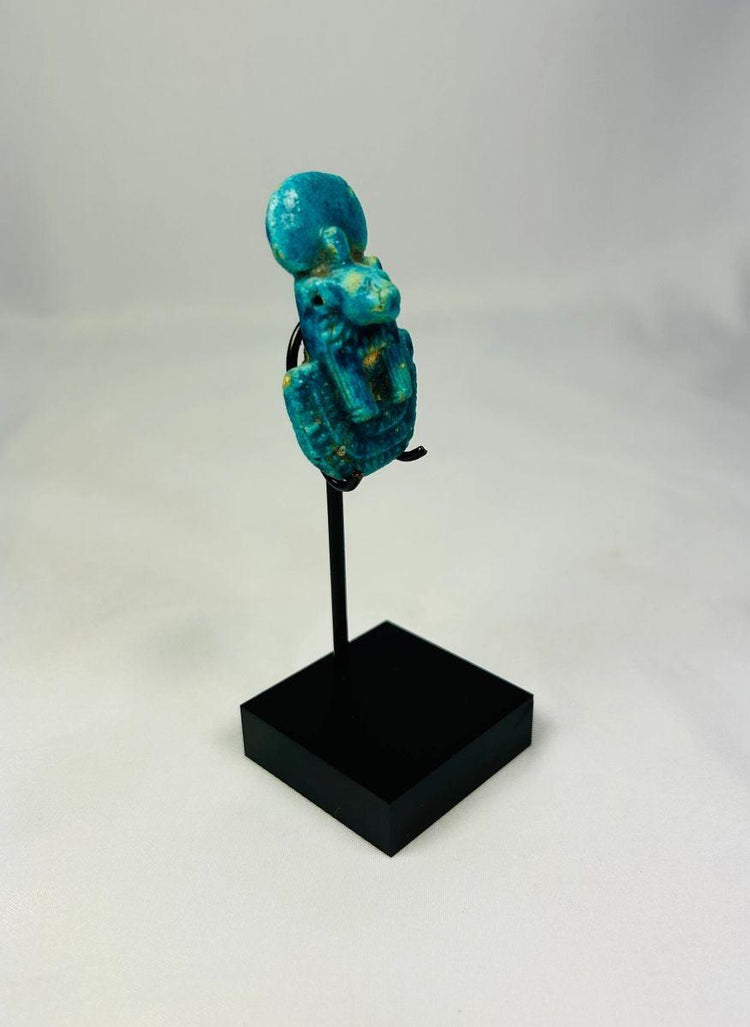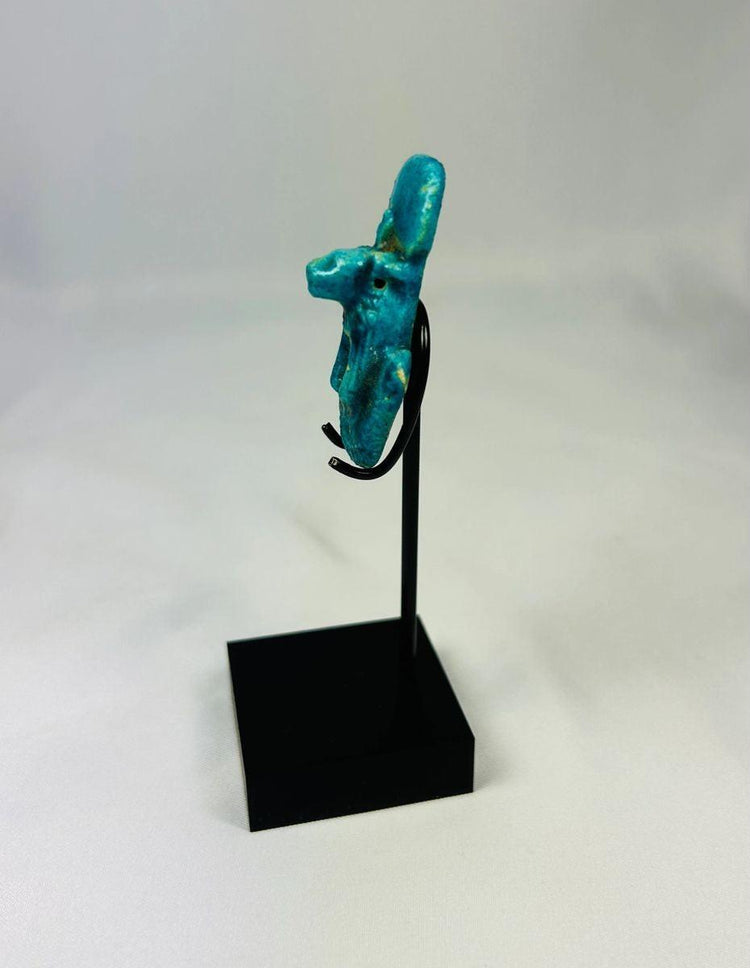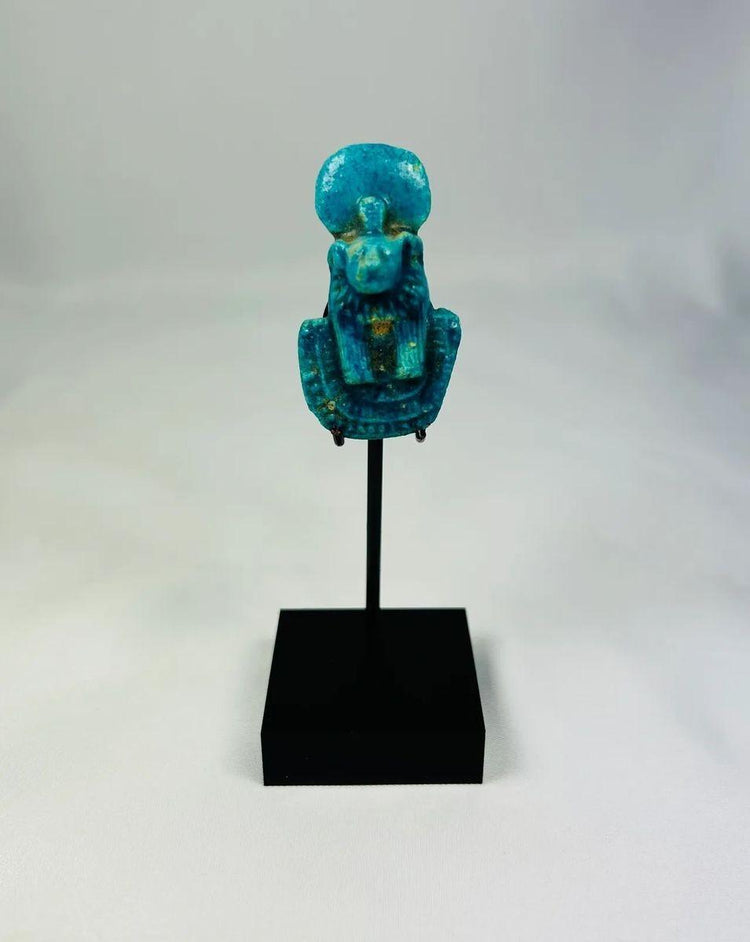Bright Turquoise | Blue Egyptian Faience Amulet of Sekhmet | 1070-664 BC
Description
More
Less
Historical Context & Origin
Region: Egypt
Material: Turquoise-blue faience
Period: Third Intermediate Period to Late Period (circa 1070–664 BCE)
Description
This exquisite turquoise-blue faience amulet represents the lion-headed goddess Sekhmet, one of ancient Egypt’s most powerful deities. Measuring approximately 2 inches by 1.25 inches, the amulet depicts Sekhmet wearing a tripartite wig, her fierce yet divine presence captured in miniature form. Two suspension holes on either side indicate it was designed to be worn or carried as a protective charm, invoking the goddess’s strength, healing power, and favor.
Features
- Lion-headed form of Sekhmet, symbolizing divine strength and protection
- Vibrant turquoise-blue faience, associated with fertility, renewal, and spiritual safeguarding
- Tripartite wig, denoting divine status
- Dual suspension holes for use as a pendant or amulet
- Compact, finely detailed craftsmanship
Cultural Significance
Sekhmet, daughter of the sun god Ra, embodied the destructive heat of the sun yet also the power of healing and protection when appeased. Revered as both a goddess of war and pestilence as well as a deity of medicine, she was worshipped primarily in Memphis. Amulets such as this were carried for protection in times of conflict or illness, ensuring the wearer received Sekhmet’s divine strength and healing energy. Her lioness form represented courage, ferocity, and divine authority, qualities deeply admired in Egyptian society.
Condition
Exceptional preservation with vibrant coloration and intact suspension holes. The surface retains fine detail and luster, offering both aesthetic beauty and historical integrity.
Dimensions (approximate)
Height: 2 in
Width: 1.25 in
Age
Circa 1070–664 BCE
Learn More & Explore
Read from Our Blog: The Timeless Power of Egyptian Amulets – Protection & Strength
Discover additional mummies, amulets, and funerary artifacts in our curated Ancient Egyptian collection: Explore More of Our Egyptian Collection
Learn about the techniques, symbolism, and craftsmanship behind ancient faience in this insightful article from The Metropolitan Museum of Art.
Description
Historical Context & Origin
Region: Egypt
Material: Turquoise-blue faience
Period: Third Intermediate Period to Late Period (circa 1070–664 BCE)
Description
This exquisite turquoise-blue faience amulet represents the lion-headed goddess Sekhmet, one of ancient Egypt’s most powerful deities. Measuring approximately 2 inches by 1.25 inches, the amulet depicts Sekhmet wearing a tripartite wig, her fierce yet divine presence captured in miniature form. Two suspension holes on either side indicate it was designed to be worn or carried as a protective charm, invoking the goddess’s strength, healing power, and favor.
Features
- Lion-headed form of Sekhmet, symbolizing divine strength and protection
- Vibrant turquoise-blue faience, associated with fertility, renewal, and spiritual safeguarding
- Tripartite wig, denoting divine status
- Dual suspension holes for use as a pendant or amulet
- Compact, finely detailed craftsmanship
Cultural Significance
Sekhmet, daughter of the sun god Ra, embodied the destructive heat of the sun yet also the power of healing and protection when appeased. Revered as both a goddess of war and pestilence as well as a deity of medicine, she was worshipped primarily in Memphis. Amulets such as this were carried for protection in times of conflict or illness, ensuring the wearer received Sekhmet’s divine strength and healing energy. Her lioness form represented courage, ferocity, and divine authority, qualities deeply admired in Egyptian society.
Condition
Exceptional preservation with vibrant coloration and intact suspension holes. The surface retains fine detail and luster, offering both aesthetic beauty and historical integrity.
Dimensions (approximate)
Height: 2 in
Width: 1.25 in
Age
Circa 1070–664 BCE
Learn More & Explore
Read from Our Blog: The Timeless Power of Egyptian Amulets – Protection & Strength
Discover additional mummies, amulets, and funerary artifacts in our curated Ancient Egyptian collection: Explore More of Our Egyptian Collection
Learn about the techniques, symbolism, and craftsmanship behind ancient faience in this insightful article from The Metropolitan Museum of Art.
You May Also Like






















